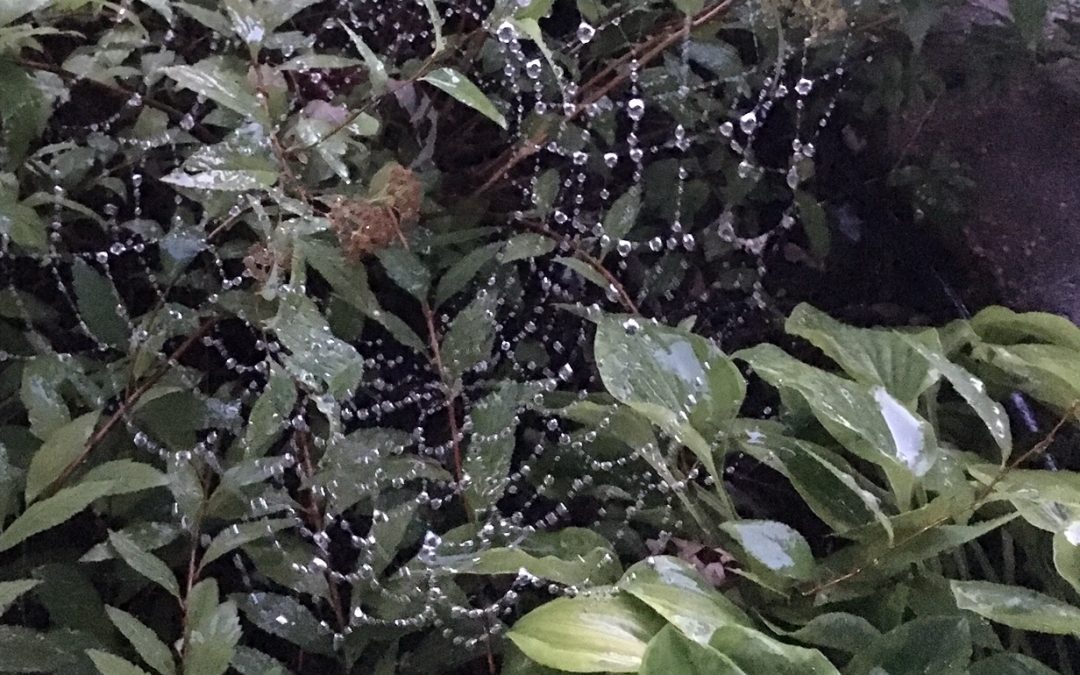If you’re a spider, or if you knit, you know the importance of holding tension.
Just right, not too tight.
Gently enough to allow the weave to flow, but not so loosely that it all falls apart.
Creative tension in other areas can be like that, too. I once heard Brian Swimme, an accomplished cosmologist, speak about the play of tension in the creative evolution of things in nature and in human endeavor. His point was calling us to expand our capacity to hold creative tension, which is especially vital during shifts from one evolutionary phase to the next.
What exactly are we holding?
Perhaps we hold many things at once, but tension of the creative variety is between what currently is and what could/will be.
In the creative process, we are holding two or more divergent concepts or realities simultaneously. We have the vision of what we desire, and we have the current reality which may differ greatly from that vision.
A simple example is knitting a sweater. We imagine a warm sweater, envision what it will look like, and we might even have a picture and a pattern. A vision of the completed sweater is held in creative tension with the present situation of no sweater. Yet.
A more complex situation arises when creating something completely new. If it has never been done before, there is no clear picture, pattern or past experience of what is yet to come. This calls us forth in new ways to generate and clarify the vision, and to keep hold of that vision in creative tension with a current reality that may be in dramatic contrast.
When redesigning our communities, for example, to be vibrant, healthy and just for all, that dream stands in stark contrast to the injustices and inequities that so many people experience at this time.
When in creative mode, you might say we are holding room for ambiguity. Two seemingly oppositional dichotomies can both be true at the same time. Our ability to be in creative tension requires the capacity to tolerate and withstand such ambiguity. Thus, the practice of withstanding the possibility of multiple positions being true at once offers one way out of a low-level paradigm that is rooted in double-binds, false dichotomies and dualistic thinking, out into a paradigm where a different way is possible.
I think Albert Einstein was onto something when he famously said, “We can not solve our problems with the same level of thinking that created them.”
What does it take to be in creative tension?
Understand the Present Reality
Rather than ignoring or denying what’s presently true and stepping off the deep end into some pie-in-the -sky idea, accepting what’s happening and how it came to be is important to allow the creative process to engage. You could think of this practice similar to the “YES” portion of the “Yes-And” tone of improv. You don’t need to like it, but acknowledging and receiving what’s present is key.
Energize the Heart-Vision
What do you long for? What do you imagine possible?
Activate your clever imagination and dream up what you truly desire. Then dare to long for it even more. Good faith and sharing the dream with others helps here, too. By daring to feel the deepest desire in your heart for something better, and by focussing your intention upon that outcome, you are actively aligning with creative energy.
Pay Attention
Once you choose to intentionally create, opening your awareness allows you to notice what’s needed along the way.
Who can you call upon? What opportunities will surface? What resources do you have? Often this is not known from the start, but you’ll notice what’s needed next by paying attention.
Play & Adjust
Just as learning to hold the yarn and needles with ample tautness takes practice and attention, adjusting to the amount of tension needed for any creative endeavor, no matter the scale, takes a willingness to be playfully present. Holding the tension lightly, but just enough without gripping or grasping, is a skill and an art worth practicing.
“Be open, rather than attached to, the outcome,” teaches Angeles Arrien, author of The Four Fold Way: Waling the Path of the Warrior, Teacher, Healer and Visionary. And staying engaged to embrace sufficient creative tension means being open to, but not attached to, the route toward that outcome, too.
What more can the spider teach us? If only we could hear what she has to say about creative tension in her strong but delicate weaving.
*Special thanks to my neighbor, Amy Driscoll, for the photo she took in her yard 9-4-20.

